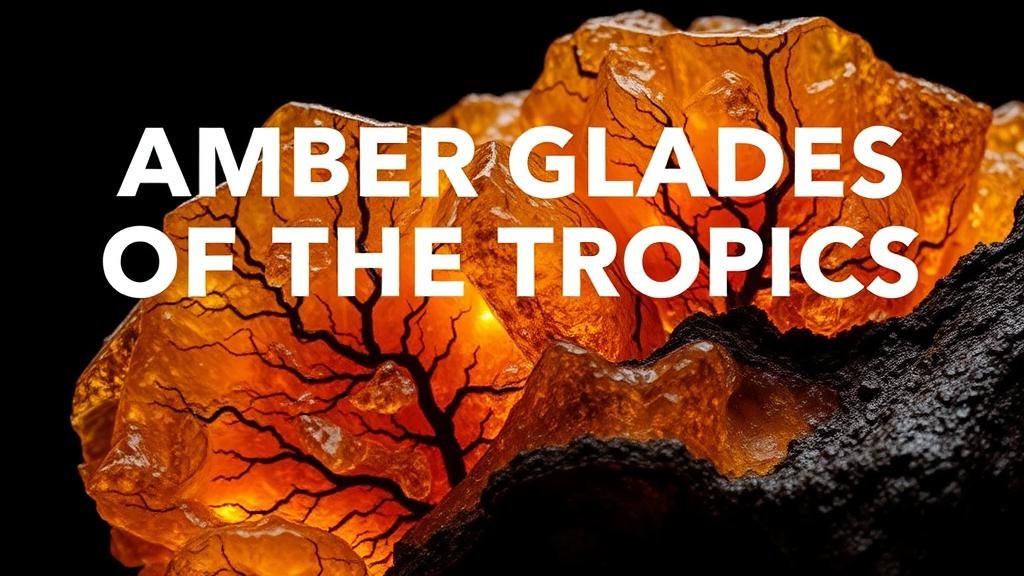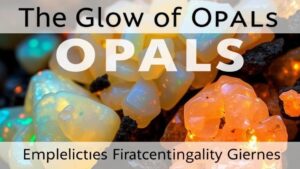Amber Glades of the Tropics: Exploring Fossilized Forests Preserved in Resin
Amber Glades of the Tropics: Exploring Fossilized Forests Preserved in Resin
Amber is a beautiful, highly sought-after substance that captures the imagination of rockhounds and mineral collectors alike. Known for its warm hues ranging from golden yellows to deep browns, amber is fossilized tree resin that has been preserved for millions of years. The captivating qualities of amber lie not only in its stunning appearance but also in the ancient flora and fauna it can encapsulate. In this article, we will delve into the fascinating world of amber glades, where fossilized forests tell stories of tropical ecosystems long gone.
The Formation of Amber
The process by which amber forms is quite remarkable. It begins with the secretion of resin from trees as a response to injury or infection. This viscous substance eventually hardens and undergoes polymerization, transforming into amber over millions of years. geological conditions and timeframes involved are significant, with amber deposits typically forming within sedimentary rock layers from the late Jurassic to the late Cretaceous periods, about 150 to 40 million years ago.
The chemical composition of amber primarily consists of a polymer called succinite, which is distinguished by its organic acids, alcohols, and other hydrocarbons. Analyses indicate that the density of amber generally ranges around 1.05 to 1.10 g/cm³, which accounts for its buoyancy in saltwater.
Fossilized Treasures Encased in Amber
One of the most compelling aspects of amber is its ability to preserve ancient life forms. Insects, pollen, and even small vertebrates have been found perfectly trapped within amber, providing scientists with invaluable information about prehistoric ecosystems. For example, researchers discovered a 100-million-year-old ant trapped in amber from Myanmar, giving insights into the behavior and evolution of early social insects.
Notably, amber is often characterized by inclusions–tiny organisms or particles–within the resin. These inclusions can range from:
- Insects like mosquitoes and beetles
- Plant matter such as leaves and flowers
- Air bubbles, which provide clues about the atmospheric conditions at the time of resin formation
Types of Amber and Their Geographic Origins
Different regions of the world produce distinct types of amber, each with unique characteristics. Key varieties include:
- Baltic Amber: Hailing from the Baltic Sea region, this amber is among the oldest, dating back about 45 million years. Its high prevalence of insect inclusions makes it particularly valuable to collectors.
- Dominican Amber: Known for its clarity, Dominican amber often exhibits vibrant shades of blue, green, and red due to the presence of specific organic compounds. It typically contains a diversity of inclusions, offering a glimpse into the tropical ecosystems of the time.
- Myanmar Amber: Also known as Burmite, this amber provides significant paleontological insights, with fossils dating back to the late Cretaceous. Its inclusions have revealed species unknown to science.
Collecting Amber: Practical Tips for Rockhounds
If youre a rockhound or mineral collector looking to dive into the world of amber, here are some essential tips to consider:
- Understand Authenticity: Beware of synthetic ambers or imitations. unique qualities of true amber–such as its weight and specific gravity–can help in identification. Use hardness tests (amber scratches at 2-2.5 on the Mohs scale), and consider conducting a UV light test, as genuine amber fluoresces under UV light.
- Seek Reliable Sources: Purchase amber from reputable dealers or well-documented fossil shows to ensure authenticity. Avoid informal markets where synthetic ambers may be common.
- Field Collecting: If you plan to hunt for amber in the field, focus on coastal areas where erosion exposes ancient deposits. Look for pieces washed onto beaches or riverbanks.
Conclusion: The Impact of Amber on Science and Culture
Amber serves not only as a collectors dream but as a scientific treasure trove, offering insights into a prehistoric world. It highlights the intricate relationships within tropical ecosystems and the effects of environmental changes over geologic time. The fossilized organisms trapped within this beautiful substance become storytellers of the past, educating us about biodiversity and evolution.
For collectors, the journey into the amber glades of the tropics is both rewarding and educational, transforming simple fossilized resin into a narrative of life that has endured through the ages. By appreciating ambers beauty and its scientific importance, collectors can connect with both nature and history in meaningful ways.


